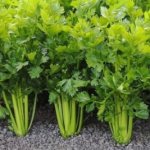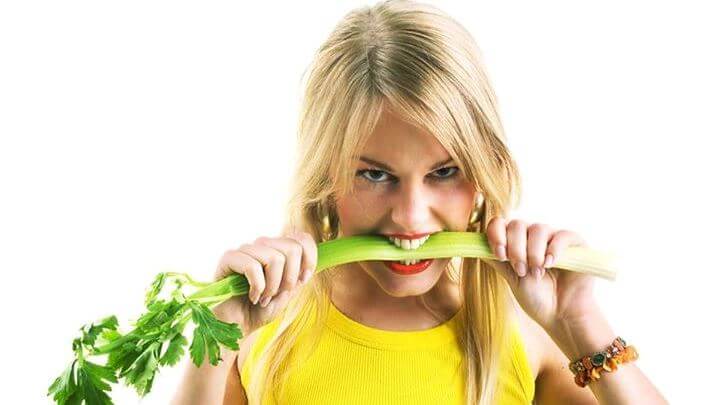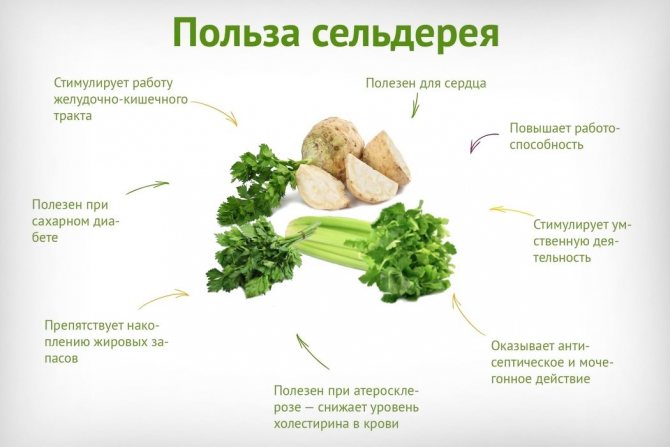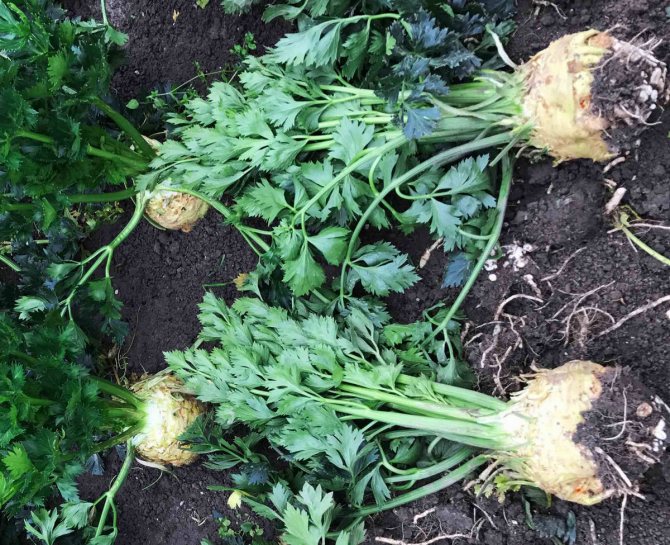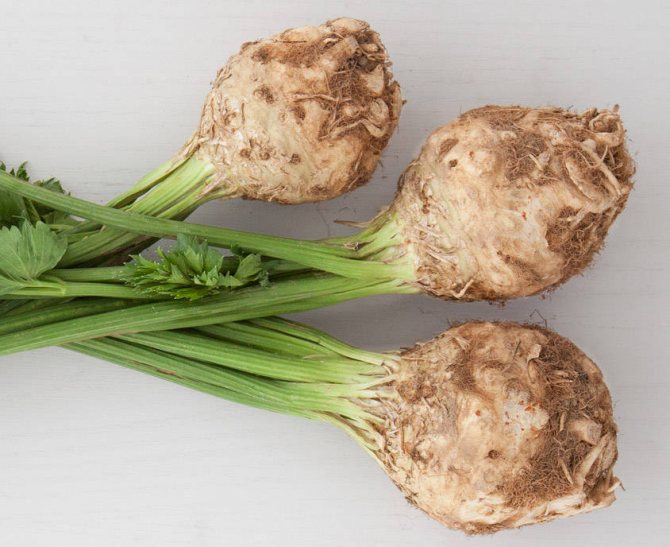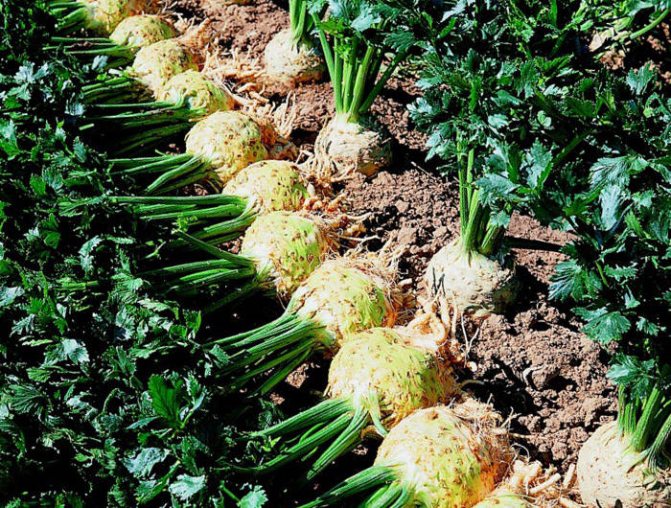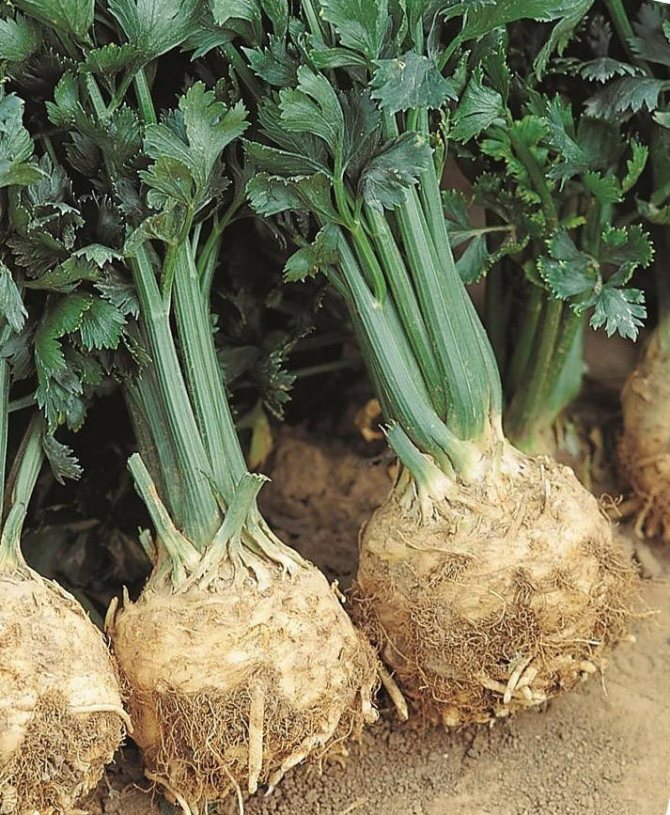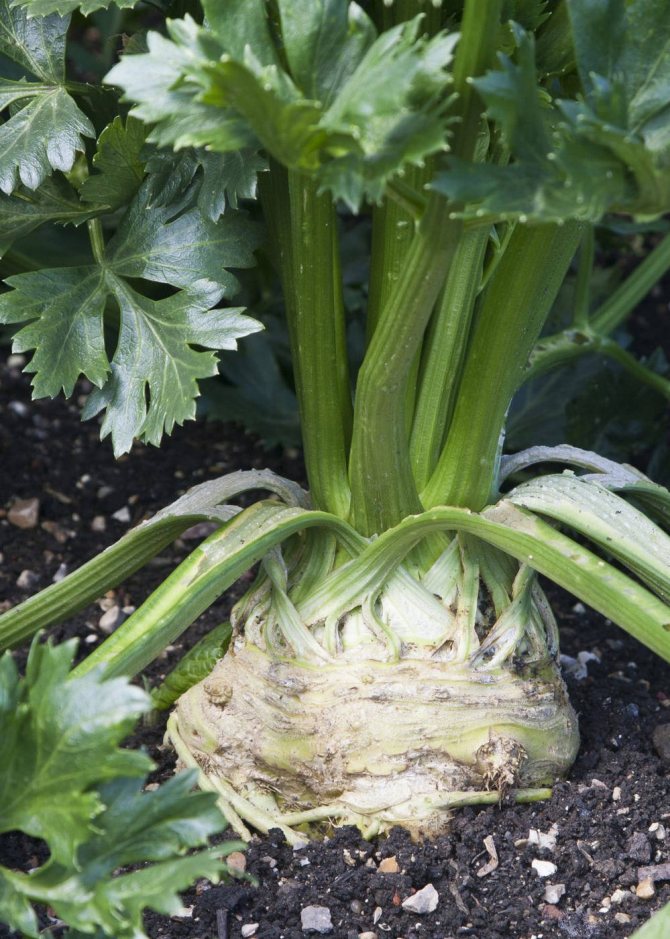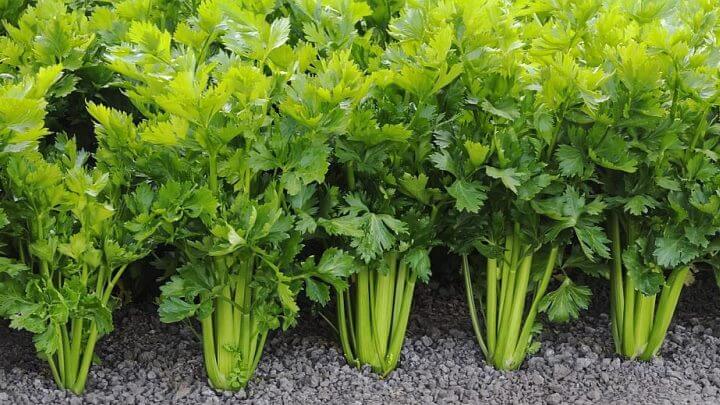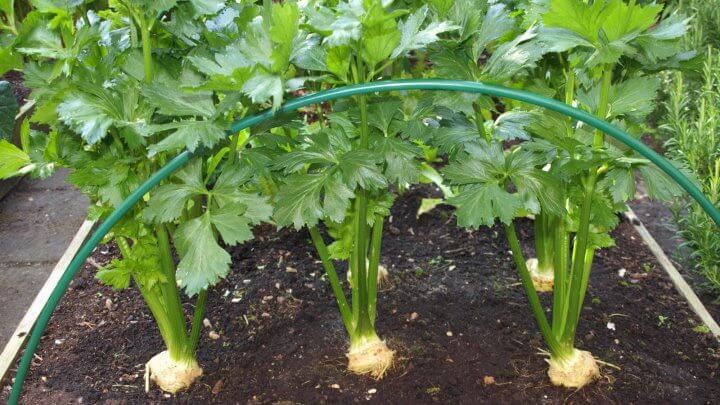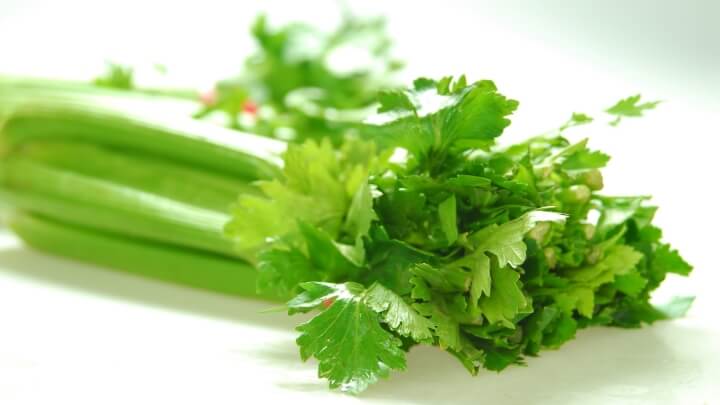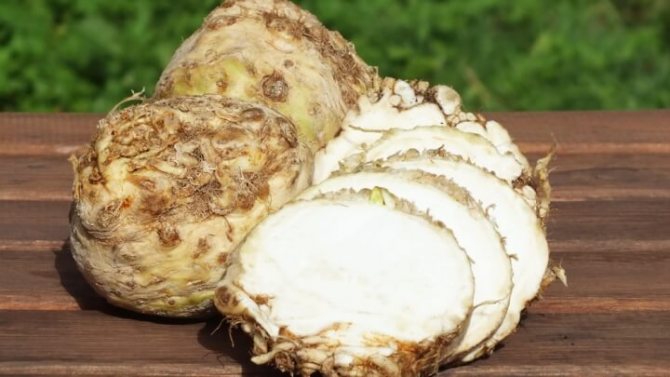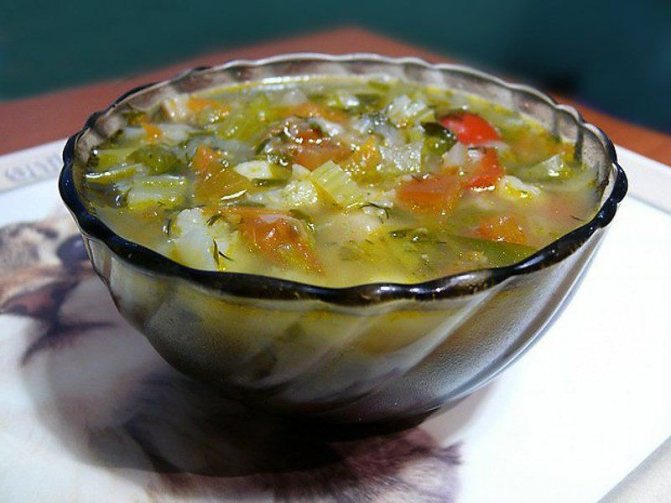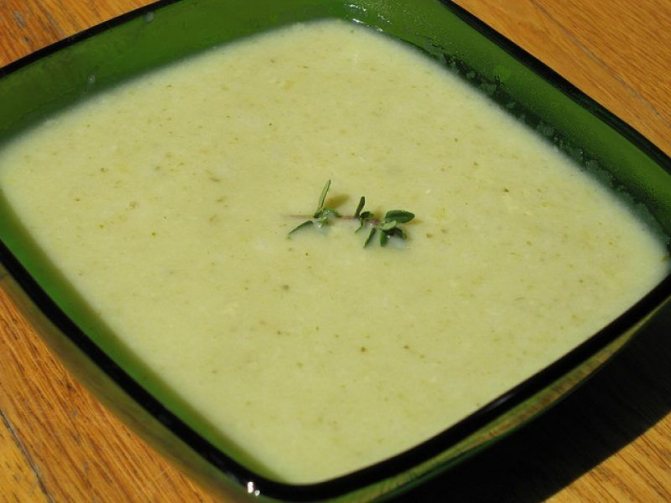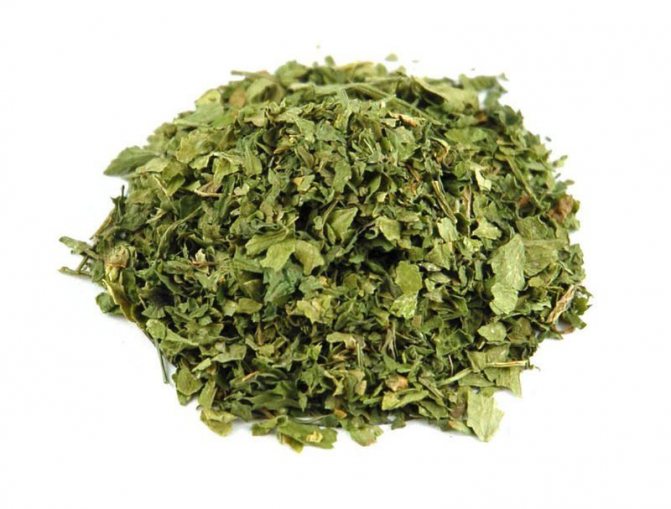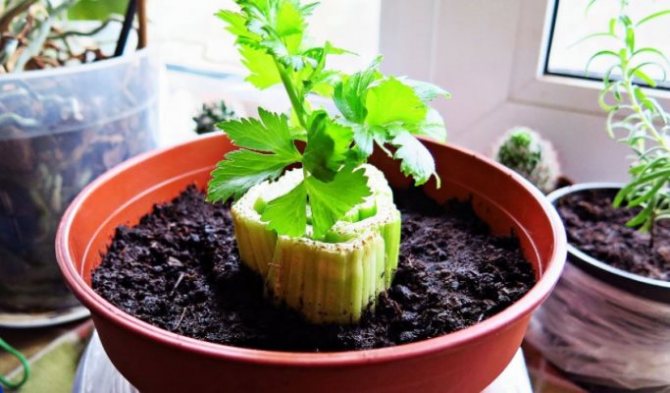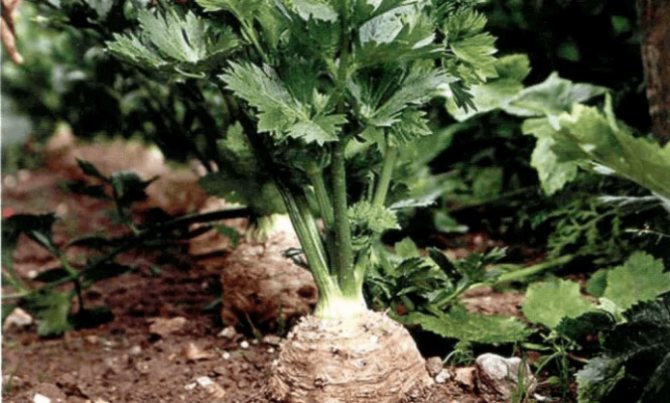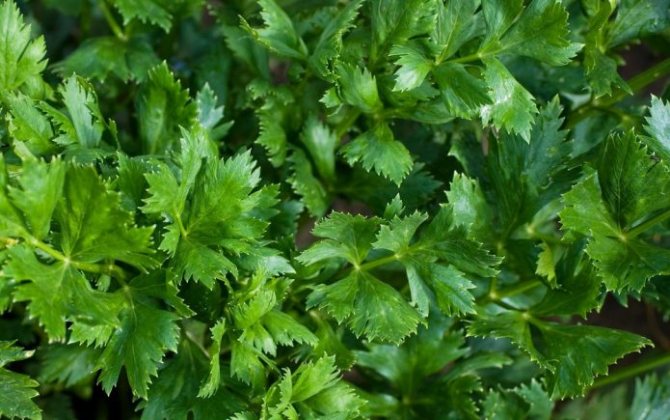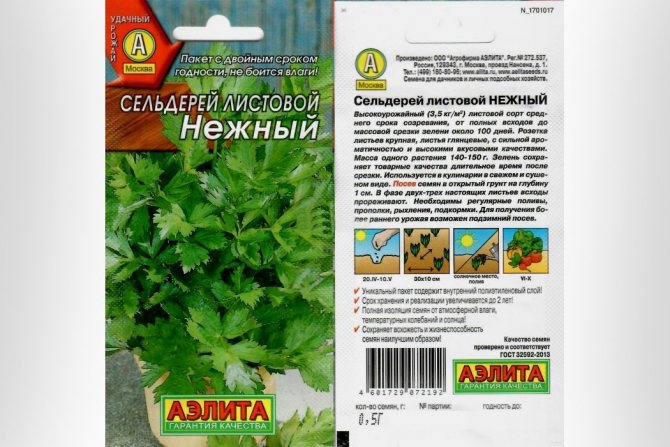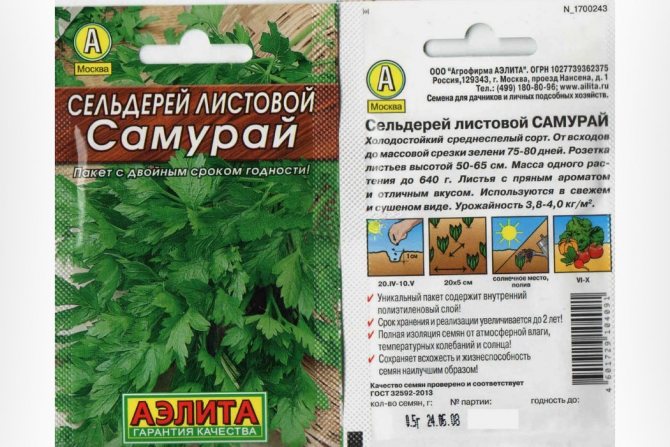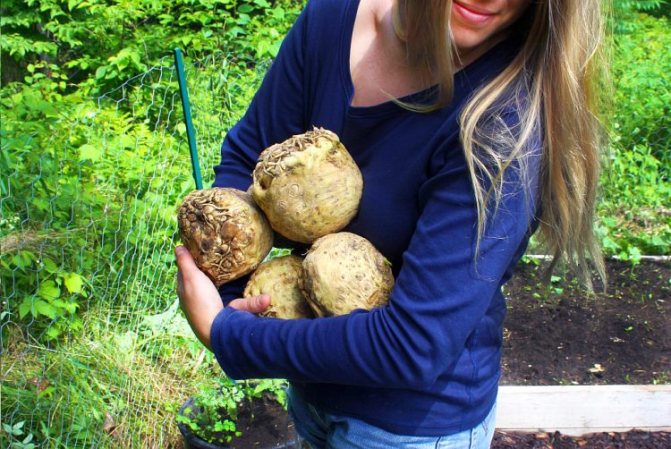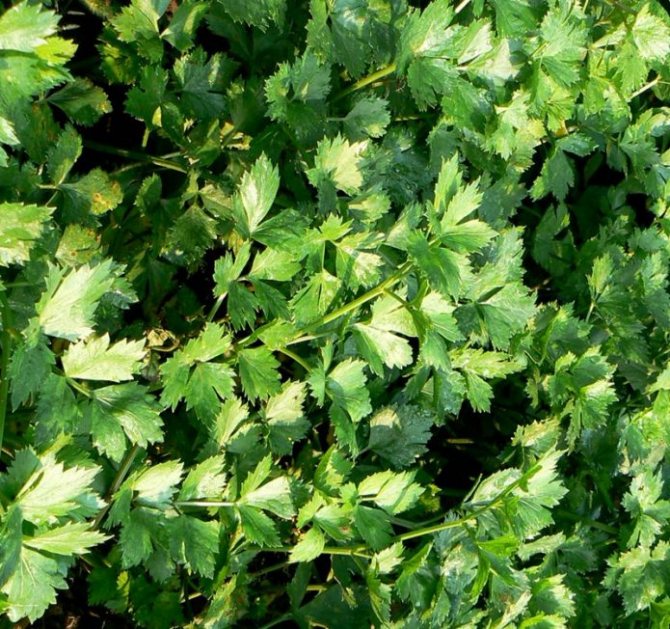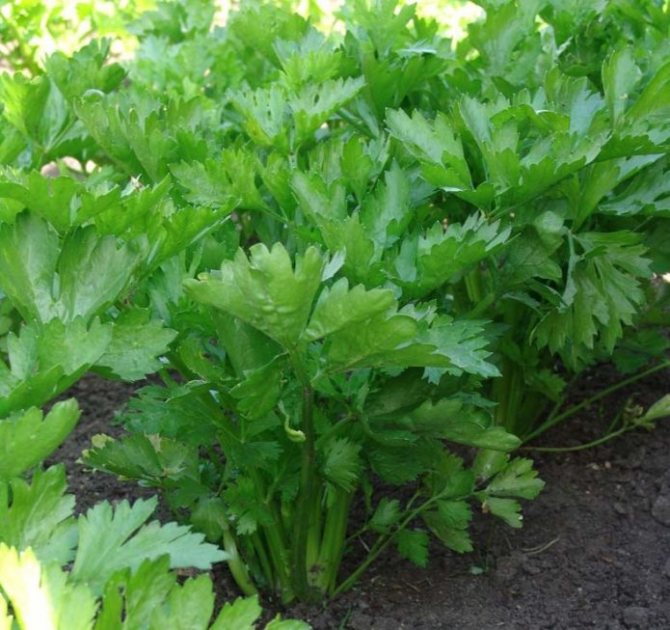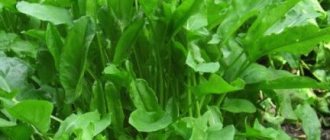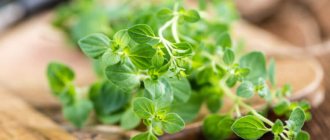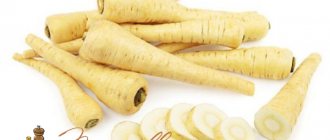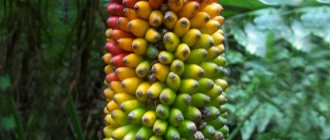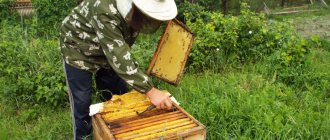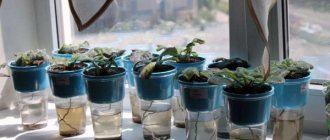Leafy celery is a fragrant herb that is widely used in cooking and cosmetology. Due to the high content of vitamins and mineral compounds, the plant has a positive effect on the digestive system and the cardiovascular system, it is used in the fight against acne. The main feature of this species is the absence of a spherical root crop.
What it is?
Leaf celery belongs to the umbelliferae family, therefore, carrots and dill are considered its close relatives. When a fragrant plant was discovered, its leaves were used as a decoration, a little later they began to be added to food due to its specific taste and strong smell.
Definition and botanical description
Leaf celery is a biennial frost-resistant plant that can tolerate temperatures down to -5… -7 ° C. Greens are hygrophilous, but unpretentious in care. This type of celery is grown throughout Russia; it is especially popular in the middle lane. The plant belongs to the Umbrella family, the name in Latin is Apium graveolens.
Important!
They eat aromatic greens and celery roots. The crop is harvested in the first year after planting. Regardless of the species, the plant has a rounded taproot.
Greens are propagated by seeds. They germinate slowly, which is why people try to grow celery through seedlings. Thanks to this technology, uniform seedlings can be obtained.
Appearance
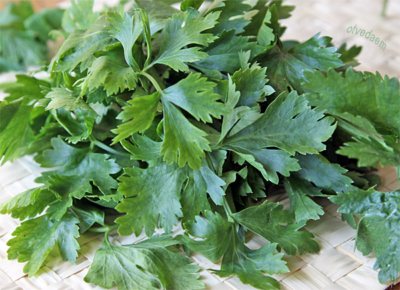
Leafy celery grows up to 1 m in height... In the first year, only stems and leaves grow. Flowering and seed formation is observed only in the 2nd year with small flowers of a white or greenish hue, which form complex umbrellas.
The stems of this species are straight, furrowed. They thicken as they approach the root. In the upper part of the plant, several pinnately dissected leaves are formed. The taproot system does not thicken around the stem line.
A brief history of breeding
Europeans were the first to domesticate and use celery for food.... In the 15th century, leafy greens were added to dishes as a condiment. After a while, the breeders managed to get the root and petiole varieties of the plant.
The fragrant herb was brought to Russia during the reign of Catherine II. At first, it was grown in flower beds. After wider distribution across the territory of the Russian Federation, they began to grow in open ground in vegetable gardens.
Chemical composition
The calorie content of leaf celery is 12 kcal per 100 g of product, which include:
- 0.9 g protein;
- 0.1 g fat;
- 2.1 g carbohydrates.
Attention!
Greens have a negative calorie content - when digesting them, the body spends more energy than it receives in return. Due to this quality, leaf celery is successfully used for weight loss.
The chemical structure of a green vegetable is saturated with nutrients that are necessary to maintain the health of internal organs and prevent various diseases:
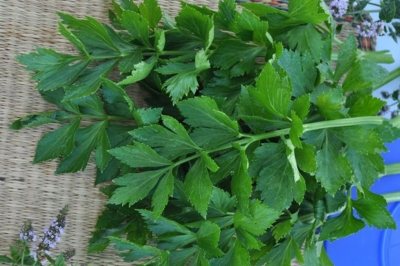

- vegetable fiber;
- a number of vitamin compounds: A, C, PP, B4, B9, K, E;
- mineral components: potassium, sodium, phosphorus, iron, manganese, calcium;
- polyunsaturated fatty acids;
- essential oils;
- organic acids;
- lutein.
By consuming 2 stems of the plant, you can assimilate 20% of the recommended daily intake of vitamins A and C.
Health Benefits of Celery
Celery is one of the lowest calorie plants, therefore it is valued as an effective weight loss aid. Its leaves contain only 16 calories per 100 g of weight, as well as a lot of insoluble fiber (fiber) useful for digestion, which, when combined with other methods of weight loss, will help to reduce body weight and regulate blood cholesterol levels.
Experts say celery has a negative calorie content. This means chewing this vegetable burns more calories than it contains, making celery one of the best weight loss foods out there. This is due to the high content of dietary fiber, which consume calories during digestion.
Celery leaves are a good source of flavonoid antioxidants like zeaxanthin, lutein, and beta-carotene, which have immune-boosting properties.
This plant is also high in vitamin A - 100 grams of fresh celery contains 449 IU or 15% of the daily required level. It is a natural antioxidant that is essential to maintain healthy mucous membranes and skin and to support vision. Consuming natural foods rich in flavonoids helps the body defend against lung and oral cancer.
Celery is rich in many vital vitamins, including folate (providing 9% of the RDI), riboflavin, niacin, and vitamin C, which are essential for proper metabolism.
Fresh celery is an excellent source of vitamin K, which helps increase bone mass by promoting osteoblastic activity. It also has a positive effect on Alzheimer's patients by limiting neuronal damage in the brain.
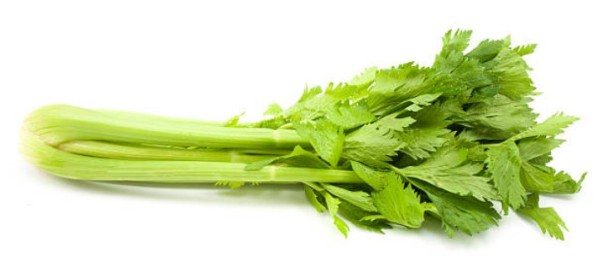

This spice is a very good source of minerals such as potassium, sodium, calcium, manganese and magnesium. Potassium is an important component of cells and body fluids that help regulate heart rate and blood pressure.
Celery leaves and seeds contain many important essential oils that include terpenes, mainly limonene (75 to 80%), and sesquiterpenes such as ß-selenene (10%) and humulene.
The unique aroma of celery is associated with chemical compounds known as phthalides (butylphthalide and its dihydro-derivative sedanenolide).
The essential oil obtained from the extraction of celery has been used as a sedative for anxiety, osteoarthritis, and gouty arthritis.
The seeds and roots have diuretic, stimulating and tonic properties, and they also aid in the secretion of breast milk.
Celery's high water and electrolyte content prevents dehydration, and the compounds present in celery make it work as a diuretic and reduce bloating.
The benefits of fresh celery
So, here are some of the health benefits you get when you add celery to your daily diet:
- Cancer prevention. The polyacetylene compounds present in celery are chemically protective and prevent cancers such as breast, lung, bowel, colon, pancreatic and leukemia cancers. It boosts the immune system, thereby preventing mutated cells from proliferating and tumor growth.
- A source of flavonoids. The bioactive flavonoids in celery, apigenin and luteolin, fight free radicals in the body and kill cancer cells, depriving them of food for growth and reproduction. The antioxidant flavonoids and polyphenolic phytonutrients in celery improve liver, skin, eye and mental health.
- Prevents cardiovascular disease.Pharmacological studies have proven that the beneficial antioxidant and anti-inflammatory properties of celery improve blood pressure and cholesterol levels, and prevent many types of heart disease.
- Reduces blood pressure. Modern scientific research confirms the benefits of celery for lowering blood pressure, which have long been used in traditional medicine. This is due to its potassium and phthalide content, compounds that relax the muscles around the arteries. Coumarin, another antioxidant in celery, increases the activity of leukocytes. Celery has a diuretic effect, so it plays a role in eliminating excess body fluids.
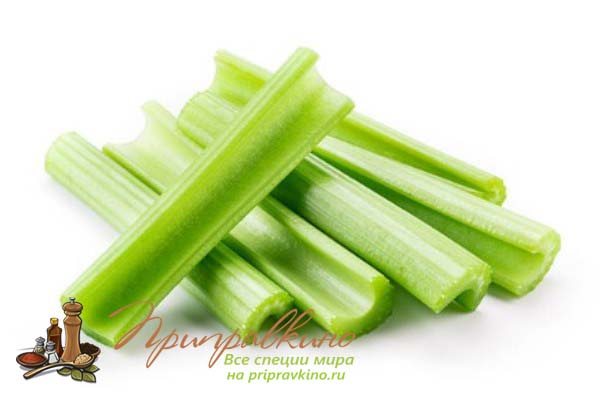

Health Benefits of Celery Seeds
Celery seeds also have health benefits associated with a variety of nutrients they contain:
- Other phytochemicals in celery seeds include limonene, coumarin and apigenin. They provide health benefits by fighting inflammation, which increases the risk of cancer, heart disease, and other problems.
- One teaspoon of the seeds of this spice provides 35 mg of calcium and 0.9 mg of iron, as well as 0.5 mg of manganese. The mineral content is relatively low compared to the daily requirement, but quite significant given the small number of seeds.
- Celery seeds are rich in flavonoids. These are antioxidants that provide pigmentation in plants and prevent cell damage.
The seeds of this plant are used to treat conditions such as:
- Arthritis.
- Gout.
- Muscle spasms.
- Anxiety.
- High blood pressure.
Research also shows that celery seeds are an effective mosquito repellent.
Comparison with root and petiolate - table
| Celery type | Description |
| Sheet | An early ripe type of celery is most widespread in Russia. The characteristic features of the plant are leaves with a glossy surface and the absence of root crops. Despite early ripening, the plant remains green for a long time. Has a specific aroma and taste. The crop is harvested throughout the summer-autumn season. The most suitable varieties for growing are:
|
| Root | It features small leaves that are rarely used as a seasoning. This species received this name because only its root vegetable is eaten. The latter is a ball with a rough gray-white surface. The weight of the root crop can reach 1 kg. The pulp has a dense structure with a sweet-bitter aftertaste. They are grown in seedlings due to the long vegetative period, which is about 180 days. Popular varieties:
Leaves can only be harvested in autumn, after the root crop has ripened. |
| Petiolate | The green vegetable has large and juicy petioles, which are 2 to 4 cm thick. They are green, reddish, pink or white in color. Petiole celery is suitable for making salads and juices. Popular varieties:
The plant does not grow more than 50 cm in length. The root crop practically does not develop. |
Application:
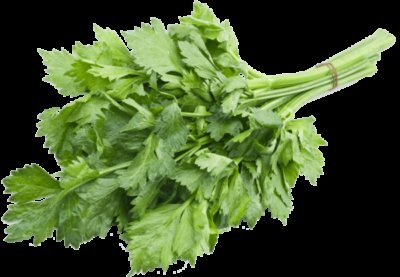

- Sheet Celery is recommended to be used as a condiment. Due to their large size, this type of plant gives off the most expressive aroma and gives the dish a bright flavor. It is used in cosmetology and folk medicine due to the high content of essential oils.
- Petiolate celery is grown for the sake of obtaining fleshy stems from which juice is well squeezed out. Plus, they allow you to feel full faster due to their high fiber content. Thanks to these properties, salads are made from the petiole type during weight loss.
- Root celery should be purchased when it is planned to use the root vegetable of the plant in cooking. Of all the species, this plant has the largest root. This is the most suitable part of the plant for creating traditional medicines - a large amount of vitamins and minerals are concentrated in the root crop.
Let's sum up
As you know, celery is a culture rich in vitamins and various microelements that are very useful for humans. It can be used not only for preparing various culinary dishes, but also as a raw material for the preparation of alcohol or cosmetics. The mass cultivation of this crop in the gardens of Russians is a rare phenomenon, however, it is still encountered, because celery can be successfully stored for a long time.
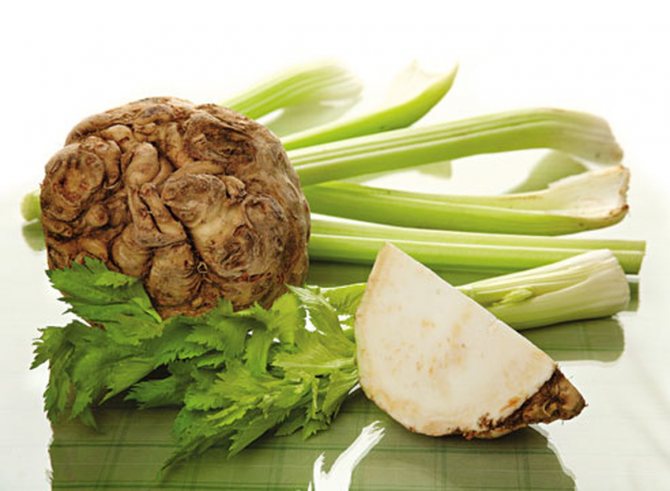

Careful selection of celery varieties is an obligatory stage in preparation for growing
Before planting the culture we are considering today on the garden beds, you will need to decide which type of this plant is most pleasant for you:
- giving abundant green foliage;
- forming large rhizomes;
- used for juicy stalks.
After that, study the available varietal varieties of the plant in your chosen category, and decide which one you want to grow, based on:
- the climatic conditions prevailing in the region, affecting both the date of planting plants in the soil and harvesting;
- the area at your disposal;
- the composition of the soil on the site, etc.
It is best to start growing a crop with sowing seeds for seedlings in order to get a more abundant and early harvest.
Benefit and harm
Leafy greens have the following health benefits:
- Normalizes the digestive tract... Plant fiber suppresses appetite, promotes the production of active enzymes and improves smooth muscle peristalsis. Vitamins and minerals are easily absorbed in the small intestine. Facilitates the passage of food and feces through the gastrointestinal tract.
- Strengthens blood vessels... With regular consumption, vitamins E and K activate the regeneration of epithelial tissue in vessels with thinned walls. The active ingredients prevent the further formation of cholesterol plaques on the endothelium, prevent the development of atherosclerosis.
- Promotes weight loss... Celery contains no simple carbohydrates and has a negative calorie content. In addition, the active ingredients of greens suppress appetite. Dietary fiber helps to cleanse the digestive tract from slag masses.
- Has a diuretic effect... Thanks to this effect, the elimination of toxins and excess fluid from the body is accelerated, edema is removed, and kidney function is improved.
- Getting rid of insomnia... Vitamins help restore the body's natural biorhythm, normalize the production of melatonin and serotonin - hormones of sleep and wakefulness. As a result, a person's cognitive functions improve, physical activity increases.
At the same time, despite a wide range of positive qualities, spicy herbs should not be overused:
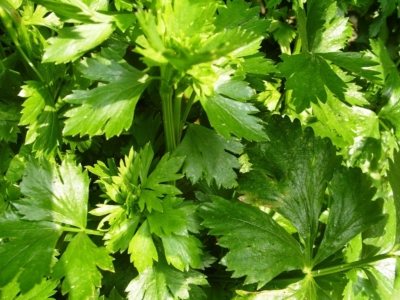

- Celery leaf increases the tone of the smooth muscles of the uterus, which is dangerous during pregnancy. Peristalsis of the uterine endothelium can lead to miscarriage or premature birth.
- Lactating women are also not advised to eat greens. Leaf celery, unlike other types, has a more pronounced aroma and taste, so it can change the taste and composition of breast milk. Such changes can cause an allergic reaction in the newborn.
- Celery has a vasodilating effect, which is beneficial for hypertension, but poses a threat in low blood pressure. In addition, such properties impair the dynamics of recovery in the treatment of varicose veins.
Planting seedlings in open ground
Planting seedlings does not occur immediately.For some time it is kept in a shaded place outside. Only when 6 leaves appear can the celery be transferred to the ground.
If a preliminary pick has not been carried out, it is done immediately before disembarkation. This is done as follows: after soaking well with an earthen lump with water, the seedlings are pulled out, carefully separating the roots.
The plot for the garden prepared in the fall is carefully loosened and seedlings are planted, depending on the type, as follows:
- Root - at a distance of 15 cm from each other, observing a row spacing of 0.4 meters.
- Petiolate - planted to a depth of 6 cm, leaving 20 cm on each side in a row, 0.3 m between rows.
- Leafy - 10 cm deep, it is not necessary to keep the distance between the plants.
Having deepened the seedling, the planting site is pressed and watered abundantly.
How is the plant used?
Due to the high content of vitamins and minerals, leaf celery is suitable not only for preparing various sauces and dishes. The plant is used to create cosmetic products for the care of the skin of the face, as well as as a means of traditional medicine.
In cosmetology
A complex of vitamins, minerals and essential oils nourish and moisturize the skin, normalizing the water-electrolyte balance in the dermis. Celery leaf is used to make face masks. The high content of ascorbic acid, which is a natural antioxidant, allows you to maintain youth longer and prevents the premature development of age-related changes.
Important!
Celery masks cleanse pores, normalize the work of sweat and sebaceous glands. Therefore, they are actively used for problem skin - active plant components break down fat plugs and narrow pores.
Celery leaf juice:
- soothes irritated skin;
- fights acne;
- accelerates the regeneration of damaged tissues.
In folk medicine
The leaves of the plant are used as an additional measure of therapy due to the following properties:
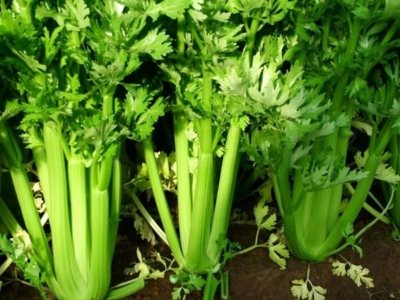

- antibacterial action;
- anti-inflammatory;
- vasodilator;
- sedative;
- diuretic;
- cleansing.
The plant is used to treat infectious and inflammatory diseases of the respiratory and genitourinary systems. Leafy celery:
- helps to stabilize high blood pressure;
- restores the rheological properties of blood;
- strengthens the walls of blood vessels.
The juice of the leaves is used to treat digestive disorders. Ointments prepared on its basis help with:
- purulent wounds;
- skin manifestations of allergies;
- ulcers.
In cooking
- The strong aroma and specific flavor make it possible to add fresh celery to season hot dishes, soups, salads.
- The plant is used to make hot and sweet sauces.
- The stems and root of the plant are added to fish and meat dishes.
- Greens go well with vegetables:
- potatoes;
- carrots;
- tomatoes;
- beans;
- white cabbage.
Attention!
Spicy herbs are a strong allergen, so it is not recommended to use it in food for people prone to anaphylactic reactions.
Celery and its types
For the first time I heard about celery in my youth when watching a popular Soviet film in which an Indian healed a boy's wounds with the leaves of this plant. Then I immediately remembered such an unusual, associative name, I also remembered the fact that it is a medicinal plant.
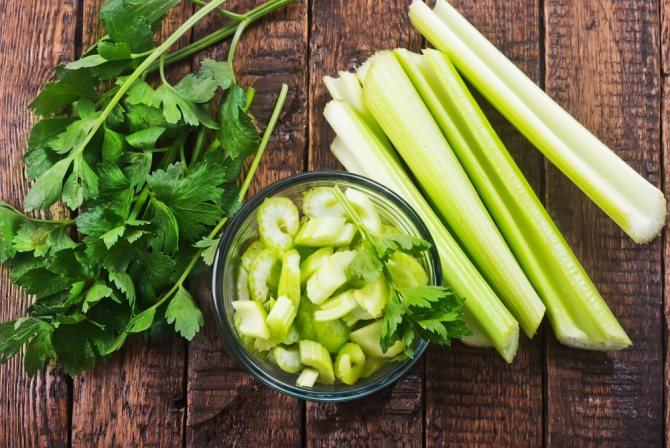

Celery is a completely edible plant, so varieties are bred in such a way as to emphasize one or another part of it: root, stems or leaves.
In fact, wild celery grows almost everywhere on five continents. Not only the Indian tribes of South America knew about him, but also the ancient Greeks.
Hippocrates, the father of medicine, said: "Live on a piece of celery a day and earn on it with great difficulty by shedding sweat."This phrase is the best confirmation of the value of the plant.
Celery is a biennial of the Umbrella family, which outwardly resembles large parsley. The first year of its growth is characterized by the formation of a rosette of beautiful greenery with a thick stem, as well as the formation of a powerful root or root crop. In the second year, it blooms and dries up after the seeds ripen. The plant is completely edible, so the varieties are bred in such a way as to emphasize one or another part of it: root, stems or leaves. Based on this, celery is divided into three types:
Do you like celery?
Yes, very! No
- Root - a large root vegetable that looks like a white beet with many eyes;
- Petiolate - juicy, fleshy stems full of vitamins and minerals;
- Sheet - fragrant greens, indispensable in salads.
Attention! Don't confuse celery with rhubarb! Rhubarb belongs to the Buckwheat family and differs in taste. The only common feature of the two cultures is the fleshy petioles.
Popular varieties
There is a large selection of different varieties of celery on the seed market. To navigate this variety, it makes sense to plant 2-3 species at once. Having tried each of them and appreciated the taste, you can make a choice for further cultivation. Here are the varieties found today:
| Root | |
| "Prague giant" | Popular early maturing root variety. Large, grows with a good fist weighing up to 800 g. The pulp is firm, but very juicy and aromatic, almost white. |
| "Apple" | A common old mid-season variety. Its tubers grow small, about 150 g, but subject to agricultural technology, they can reach up to 250-300 g. The pulp is white, aromatic. Suitable for processing and fresh consumption. |
| "Monarch" | A late-ripening disease-resistant variety that is planted exclusively with seedlings. The tubers are large, up to 500 g. The pulp is dense, juicy, light grayish. The variety has excellent storage properties and is suitable for transportation. |
| Petiolate | |
| "Malachite" | Early ripening variety. Forms an erect rosette of large dark green leaves with thick (up to 5 cm), fleshy petioles. The length of the petioles is up to 40 cm. |
| "Utah" | Mid-season young variety of Italian selection with excellent taste. The petioles are light green, characterized by delicate pulp without fibrillation. |
| "Tango" | Late ripening, high yield. Forms a raised rosette of leaves with emerald petioles. The petioles are juicy, fleshy, very tender and practically fiber-free. It retains its presentation for a long time. |
| Sheet | |
| "Kartuli" | Early maturing, the result of the work of Georgian breeders. The green mass grows all summer. The first cut can be carried out within a month after germination. The variety is resistant to sudden changes in the weather. |
| "Zakhar" | Mid-season variety with the highest yield among all leafy varieties. The leaves are delicate, very fragrant, suitable for consumption in any form. They grow back very quickly after cutting. |
| "Sail" | High-yielding early-ripening variety with lush green mass. The leaves are fragrant and have excellent taste. The variety is unpretentious to agricultural technology. |
From personal experience... In fact, there are many more varieties of celery, and which one to choose is a matter of taste and lightness of the hand. Personally, I like Egor, he has never let me down. By the way, in one old book (“A Year in the Garden”, D. Haas, Z. Kavecki, J. Marcinkowski, 1982) I read that root celery is best stored in sand piles. The method is good, but more on it a bit later.
Varieties - description, photo
The following varieties are most suitable for growing leaf celery in seedlings.
Cartouli
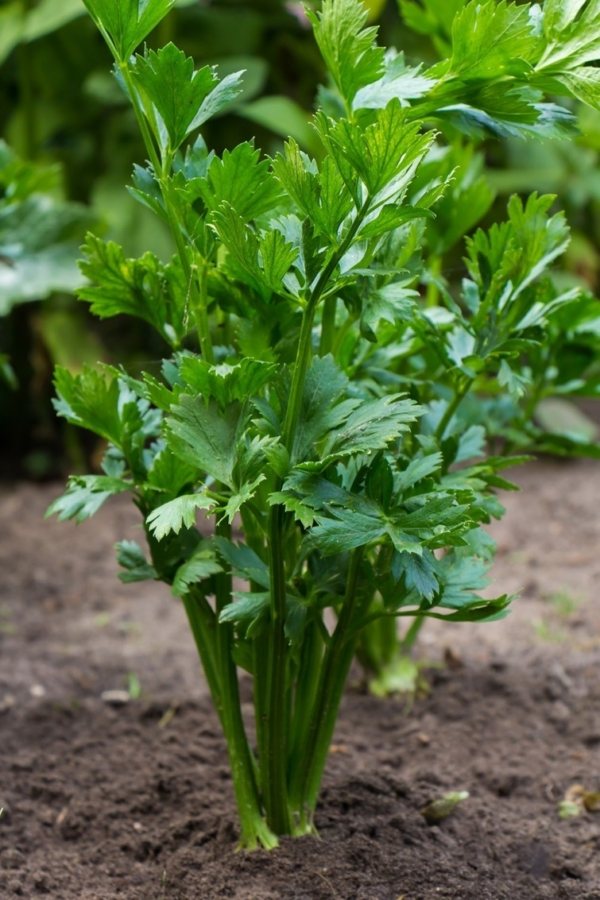

After germination, greens can be harvested after 65 days.... It is recommended to plant the plant in the summer when the leaves can be cut 2-3 times. The variety is distinguished by a straight rosette, strong odor and dark green stems. The cartouches are frost-resistant, drought-resistant and easy to care for. Therefore, it is excellent for regions with a temperate climate.
Samurai
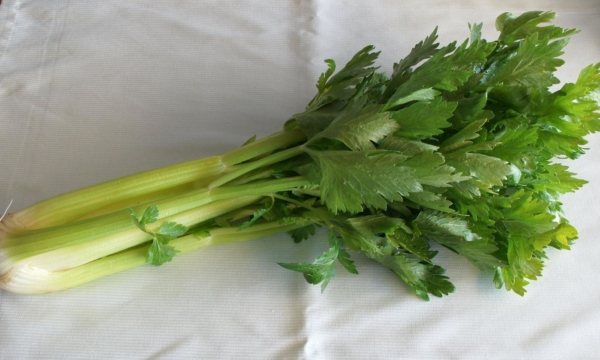

The main feature of the variety is its medium-sized curly leaves with corrugated edges. The first crop is harvested 75 days after the first shoots appear. The persistent aroma and strong bite make it possible to use the Samurai as a seasoning for spicy dishes.
Tender
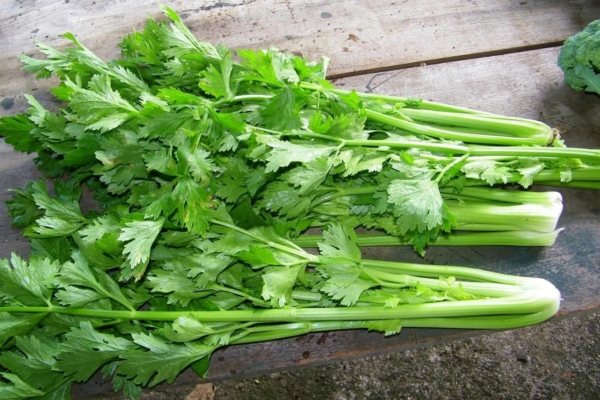

A mid-season high-yielding variety produces greens 100 days after germination. The greens are dark green, celery has many shoots.
Zakhar
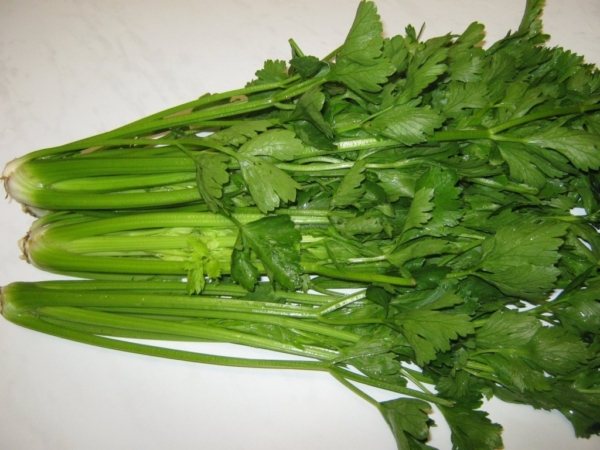

Crop can be harvested 105 days after germination... This variety is most suitable for growing in seedlings - in this case, the leaves can be cut off by mid-summer. After the first harvest, new petioles sprout quickly.
Important!
When choosing a variety of leaf celery, you should take into account the characteristics of the region and climatic conditions.
Outdoor Celery Care
Each type of plant needs a kind of care:
- Root - afraid of weeds that grow quickly and interfere with seedlings. It is recommended to pay special attention to weeding. You need to feed the plant three times, the first time 2 weeks after planting. A little later, when the stems begin to actively rise, they will fertilize again. The last time - on the fact of the formation of a root crop in the initial period.
- Petiolate - must be planted correctly. On the beds prepared in the fall, depressions of 30 cm are made, leaving 0.4 meters between the rows. Fill the wells with fertilizer. The ditches are designed to cover the petioles so that they are white and not bitter. There are specially bred varieties that do not need hilling, but they are not so tasty and are afraid of cold weather. After planting seedlings, the first feeding is carried out a month later. As they grow, the stems are covered with earth, carefully monitoring the moisture of the soil. After irrigation, they must loosen the ground. When the height of the bush reaches 30 cm, the shoots are neatly tied into bunches, wrapped with dark paper, leaving only the tops with leaves on the surface.
- Leafy is the most unpretentious species. He needs timely watering, weeding and loosening. So that after irrigation a crust does not form, dry grass is laid at the base, at a short distance from the center of the bush, so that growth does not stop.
Growing rules
Leaf celery seeds emerge when planted in a seedless manner for a long period of time. To speed up the harvest, the plant is preferred to grow in seedlings. After the development of seedlings, they are sown in open ground.
You can plant seeds directly into the ground, in mid-April and early May... It should be borne in mind that the harvest will be late.
Seedlings
Sowing celery seeds in seedlings should be in mid-March. In this case, it is necessary to prepare a special soil, which is a mixture:
- leafy land;
- low-lying peat;
- sand;
- humus or rotted compost.
All ingredients must be taken in equal proportions.
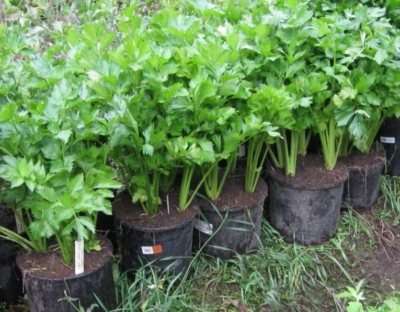

In order not to wait 180 days before seed germination, the seed should be:
- Treat with growth stimulant solution and soak in water for 72 hours.
- Small seeds should be evenly distributed in rows on the ground in the box.
- After that, you need to sprinkle them with a thin layer of sand or peat.
When growing leaf celery, you can do without picking... With the seedling method of planting, you only need to thin out the first shoots when the first true leaves appear, providing each plant with the necessary area of good nutrition.
After sowing the seeds, cover the box with foil and place it in a place with a temperature of + 20 ... + 24 ° C. With proper preparation, seedlings will appear in 6-8 days. Then you should remove the film and put the leaf celery in a well-lit place with a temperature of + 13 ... + 16 ° C for 10 days. Thanks to such conditions, the root system will develop. The soil must be kept loose.
Without seedlings
Leaf celery seeds can be sown outdoors in March or late autumn towards the end of October:
- Furrows are dug at a distance of 20-25 cm so that the sowing depth reaches 1-2 cm.
- It is rarely necessary to sow, because densely permanent greens are difficult to break through.
- You need to break through the seedlings in 3 stages: first you should leave 5-7 cm, then 10-15 cm, after - 20-25 cm.
Watering celery should be abundant, once a week. Seeds are collected only from healthy plants.
Attention!
It is not necessary to plant leafy celery in highly fertilized soil, because in this case the growing season will greatly increase and the seeds will have to be harvested late.
At home
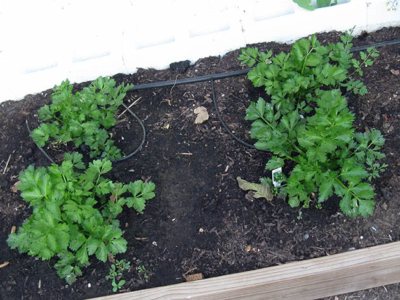

For sowing leafy celery for seedlings at home, seed should be purchased in early March.
In this case, you need to hold the seeds in a solution of potassium permanganate for 3-5 minutes, rinse well and fold on a cloth soaked in a solution of a growth stimulator. They must lie on it for 24 hours. During this time, the seeds will swell and be ready for planting.
Seedlings are grown according to the following algorithm:
- The boxes are filled with a mixture of leaf earth, peat and sand, taken in equal proportions.
- Seeds are spread over the surface of the soil, keeping a distance of 1-2 cm between them. You can place them with a toothpick.
- From above, the planting material is sprinkled with a layer of earth of 0.5 cm.
- It is necessary to moisten the soil. To do this, you can spray the soil with a spray gun, then cover the crops with cling film to create a greenhouse effect. At this time, you need to maintain the air temperature within + 18 ... + 20 ° C.
- Seedlings should appear in 5-6 days. When the first sprouts appear, remove the film and lower the temperature to + 15 ° C.
- For normal growth of leaf celery, diffuse lighting should be provided to the seedlings. In the absence of southern windows in the apartment, additional lighting is required. In addition, it is necessary to maintain a moderate soil moisture.
- After the appearance of 2 true leaves, you should do a pick. Pinching the taproot ensures good root development.
Planting technique for leaf celery
Before you start, decide on a location. By choosing the right one, you don't have to worry about a great harvest.
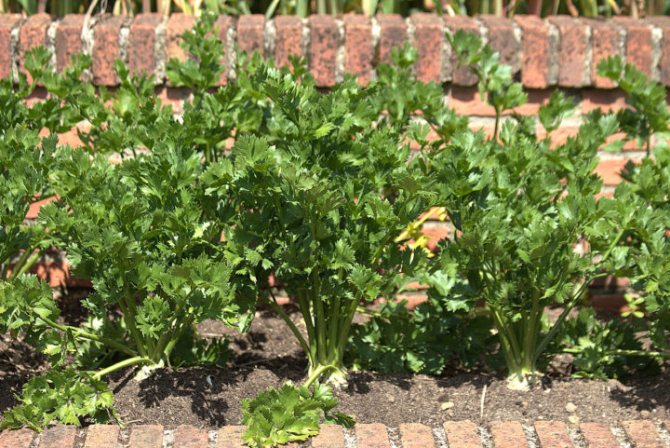

Factors affecting fit:
- optimal temperature;
- adequate lighting;
- air humidity.
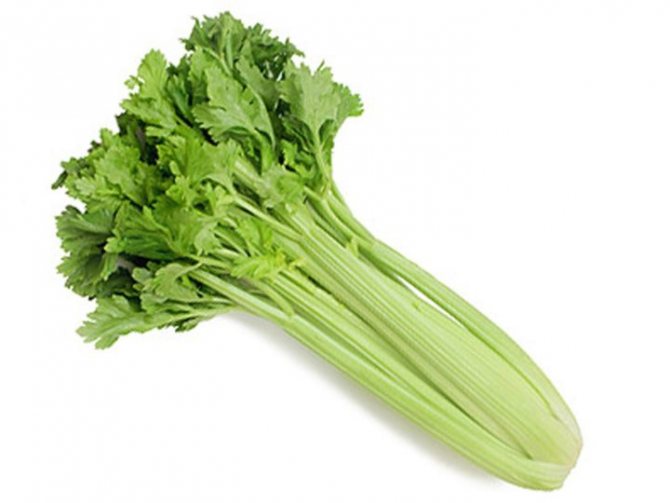

These factors provide growth and quality taste. For the product to grow, maintain the optimum temperature between 18 and 20 degrees.
If it is lower, then the plant grows more slowly, and the green mass comes out in small quantities. The plant will give a good harvest if it receives enough heat and sunlight. Do not plant in a dark place.


Celery needs increased humid air. Therefore, we additionally irrigate from a spray bottle. Do not plant in windy places, as the wind dries out the soil, cools the roots, and a strong one can break the stem and the plant dries up.
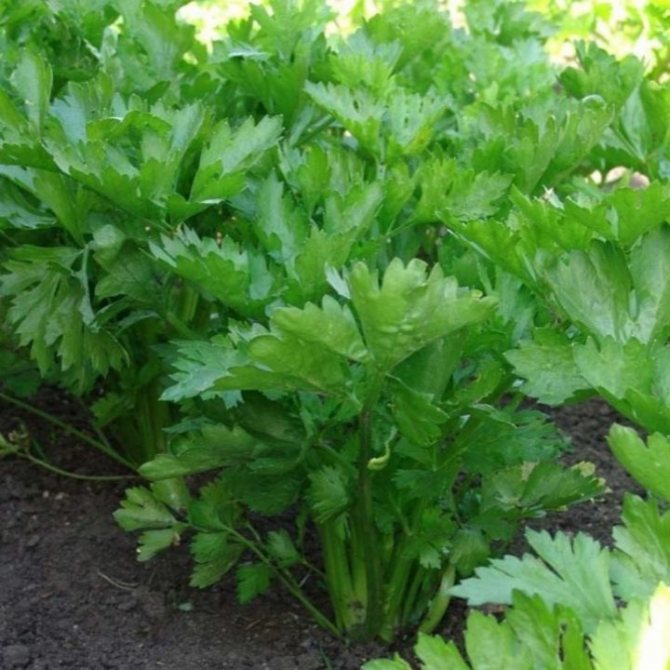

What kind of soil does leafy celery prefer? Greens grow on humus-rich soil. Sandy loam soil, loose with the addition of peat, is suitable. You can add compost in the fall, and get a harvest the next year.
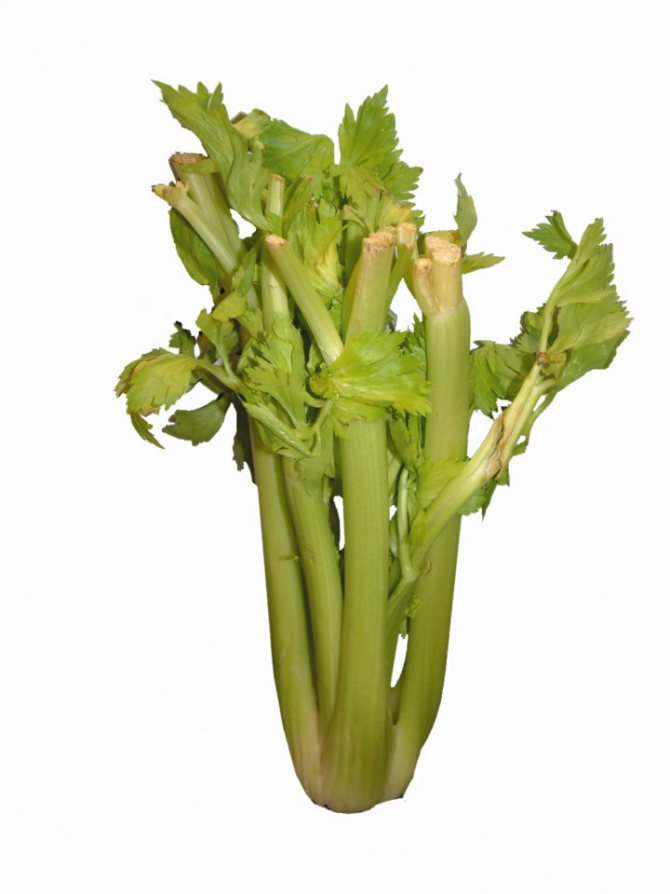

Harvesting and storage
Fresh herbs are used for harvesting. Such celery should have strong, defect-free leaves with a bright green tint. Their surface should shine and smell strong. The roots are dense, without damage. The size of the celery is not important. To harvest, you need to cut healthy leaves from the plant. In this case, the root system should not be affected; 1-2 cm of petioles should be left.
It is recommended to keep dried herbs.... For this:
- It is necessary to rinse the celery leaves and hang them on a rope in a place protected from sunlight. Drying takes about 4 weeks.
- After this time, the leaves must be rubbed and placed in a glass jar or cloth bag.
Advice
Fresh herbs can be stored in the main compartment of the refrigerator for 3-7 days.In this case, the leaves should not be wrapped in foil - they retain their smell and taste in water or plastic bags. Aluminum paper is more suitable for storing root crops.
For the winter, chopped greens can be placed in the freezer. But in conditions of low temperature vitamins will be destroyed. For storage, choose the most juicy and green stems, which, after washing and chopping, are placed in plastic bags.
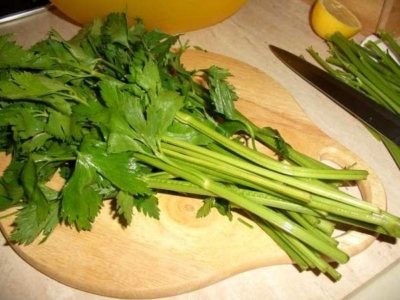

As a storage method, pickling of leaves is allowed. For this you need:
- Sterilize glass jars for 20 minutes, put 2-3 bay leaves and 4 cloves of garlic in them.
- On top of the spices, put washed celery greens.
- After that, the ingredients must be poured with hot marinade (100 g of sugar, 250 ml of vinegar, 80 g of salt dissolved in 250 ml of water).
Pickled celery is used as a ready-made snack.
Seed sowing technology
Before sowing celery seeds, the farmer must prepare. The work is carried out with sowing material, a container and soil are being prepared. In order for the seedlings to be strong, with a well-developed immune system, clearly follow the recommendations of agricultural technology.
Selection of soil and capacity
The substrate for celery is selected fertile, loose. On sale there is a soil mixture specifically for growing seedlings. You can make a substrate that works for celery yourself.
The ingredients are pre-etched with a weak manganese solution and fried in the oven. For the soil mixture you will need:
- peat (3 parts);
- sod land (part 1);
- coarse sand (1 part).
For better air exchange, wood ash (200 g or 1 glass) is added to 10 liters of substrate.
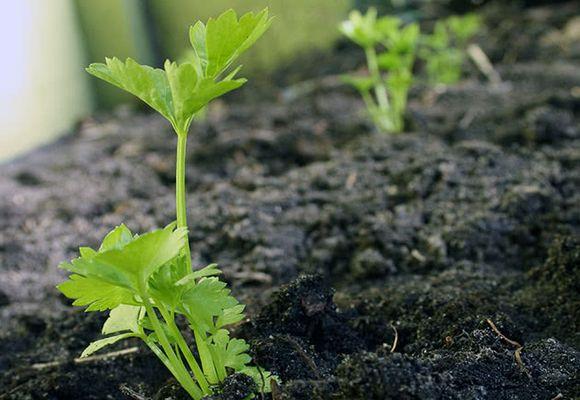

It is better to use special containers for seedlings: peat pots and tablets, cassettes, plastic containers. Experienced gardeners often use improvised materials: disposable dishes, thick bags from dairy products.
Seed preparation
Mandatory processing is required. This is due to the presence of a large amount of oils in the seedbed. Soaking helps to reduce concentration, go through the process of swelling, pecking faster.
The solution for improving the quality of seeds and for neutralization is different. This is how bubbling is initially carried out: soaking in water saturated with oxygen. Withstand at least 24 hours. Then it is sent to a manganese solution for pickling. Here celery is left for 45-60 minutes.
Diseases and pests
When growing celery, you should pay attention to the condition of the leaves of the plant. If they look lethargic and begin to turn yellow, then this may be a sign of the following diseases:
- various types of rot;
- blackleg;
- viral mosaic.
It is possible that the plant can be affected by parasites.... The pests of this culture include:
- snails;
- carrot fly larvae;
- slugs;
- scoops.
Despite the distinctive features of planting and growing, leaf celery is easy to care for. This type of spicy culture is distinguished by its large leaves and the absence of root crops, therefore it is most often used for cooking dishes and sweet-spicy sauces as a seasoning.
Plant seeds take a long time to germinate, therefore, it is recommended to grow it in seedlings. From celery leaves, you can prepare folk remedies for the prevention of eating disorders, diseases of the cardiovascular and respiratory system.
When and how to collect seeds
It is always more profitable to use seeds that are harvested from your own site. There is already confidence that the culture is fertile, processed from pests and diseases. You can collect planting material yourself using the tips:
- choose a uterine root crop. Determined by weight: 300-500 g;
- leave in the garden for wintering (in areas with a warm climate) or store until April to plant in the ground;
- celery seeds are suitable for planting only those that have ripened for at least 120 days;
- the best grains are those harvested from central umbrellas.
The testes should be two years old, but their care requirements are more stringent. Therefore, the presence of light, heat must be double. Avoid humidity, as well as waterlogging.
Root celery varieties
The culture is rich in varieties of varieties that can be selected taking into account their own preferences and the territory in which they will be grown.
Mid-early varieties:
- Apple celery... Mid-early ripening period (up to 150 days). Height up to 50 cm, weight - up to 0.4 kg. It has a rounded root crop and snow-white pulp.
- Delicacy... The root vegetable has a flat shape, slightly rounded. It is strewn with lateral roots. It has the shape of an opened rosette, thanks to the green plates. Weight no more than 0.6 kg.
- Giant Prague... High productivity. Height - 60 cm, weight - 0.8 kg.
- Root mushroom... The roots are in the form of a ball with an elongation and a weight of 250 g, up to half a meter high.
- Diamond... It has an advantage among other varieties, since it is stored for a long time. Smooth surface, huge roots, weighing more than 1 kg. Hairy coverings and voids are absent.
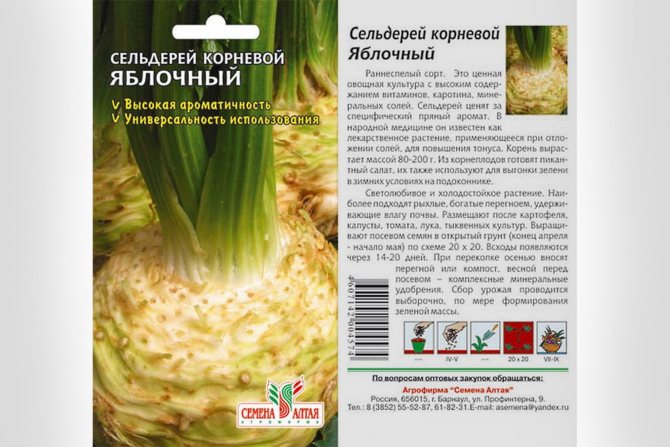

grade "Apple celery"
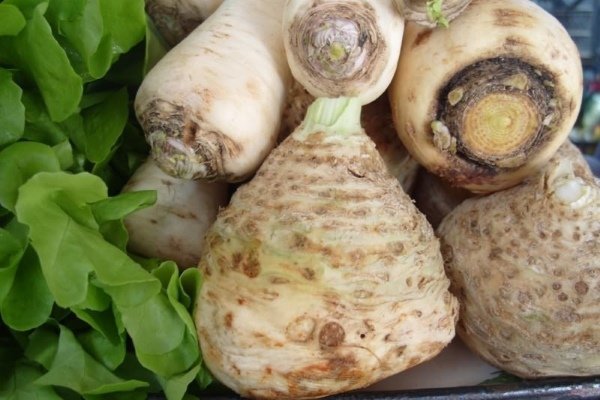

variety "Delicacy"
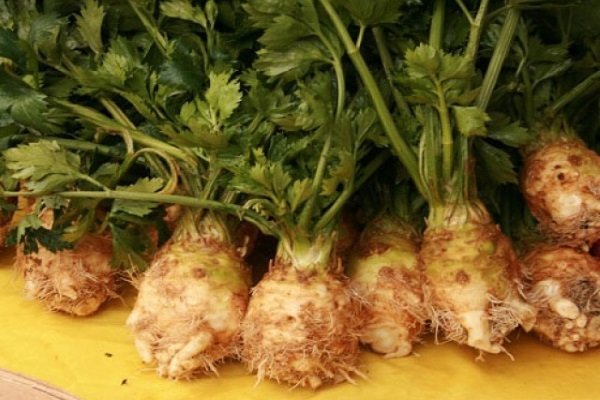

variety "Giant Prague"
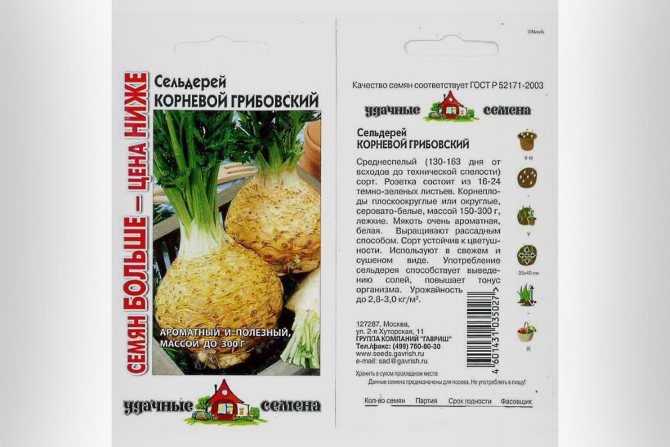

variety "Root mushroom"
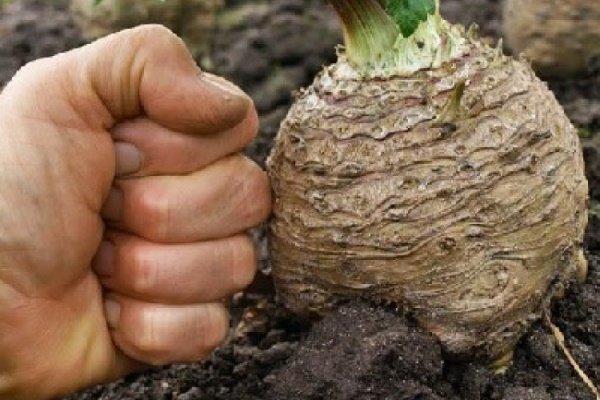

grade "Diamant"
Medium varieties:
- Strongman... Germinates 5 months after sowing and weighs 0.4 kg. The white pulp contains a lot of sugar and minerals.
- Albin... Germinates in 120 days, has a greenish skin tone and a high yield percentage.
- Egor... Maturation occurs in 6 months. It is famous for its rich aroma and high consumer demand.
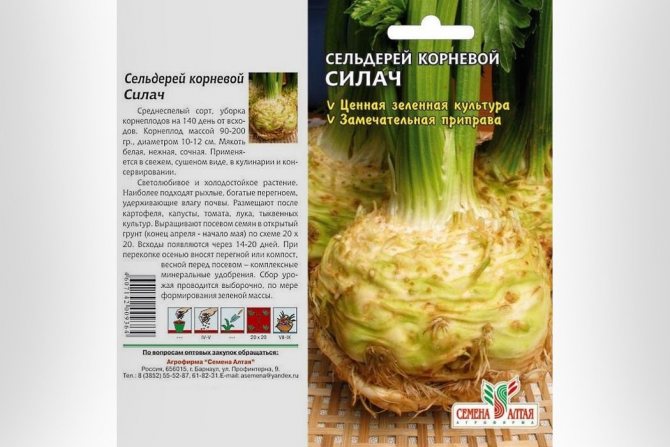

grade "Strong"
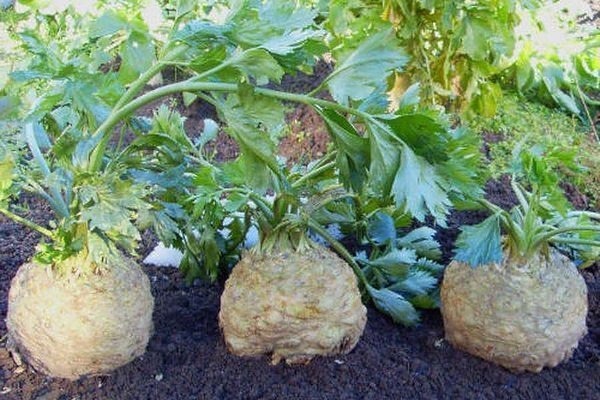

grade "Albin"
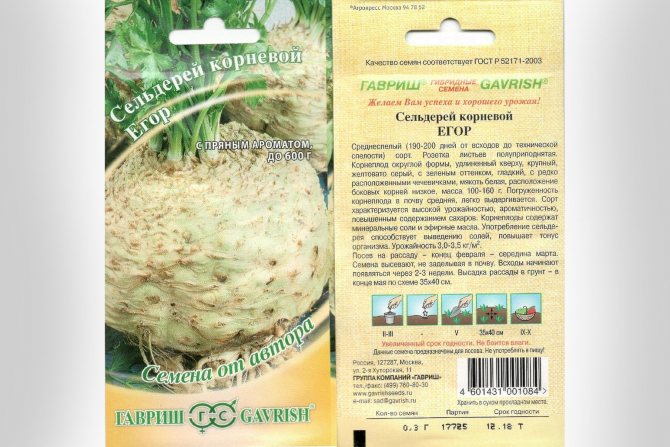

grade "Egor"
Late varieties:
- Maxim... Fruit weight - 0.5 kg, spicy taste. Roundness of root crops with lateral roots.
- Anita... The growing season is about 5 months. The root crop weighs up to 400 g. It brings a high yield. Dishes are prepared from this variety, consumed fresh and frozen.


variety "Maxim"


grade "Anita"
All root vegetables have useful properties, regardless of the variety.
When buying seeds from a specialty store, pay attention to the expiration dates.

